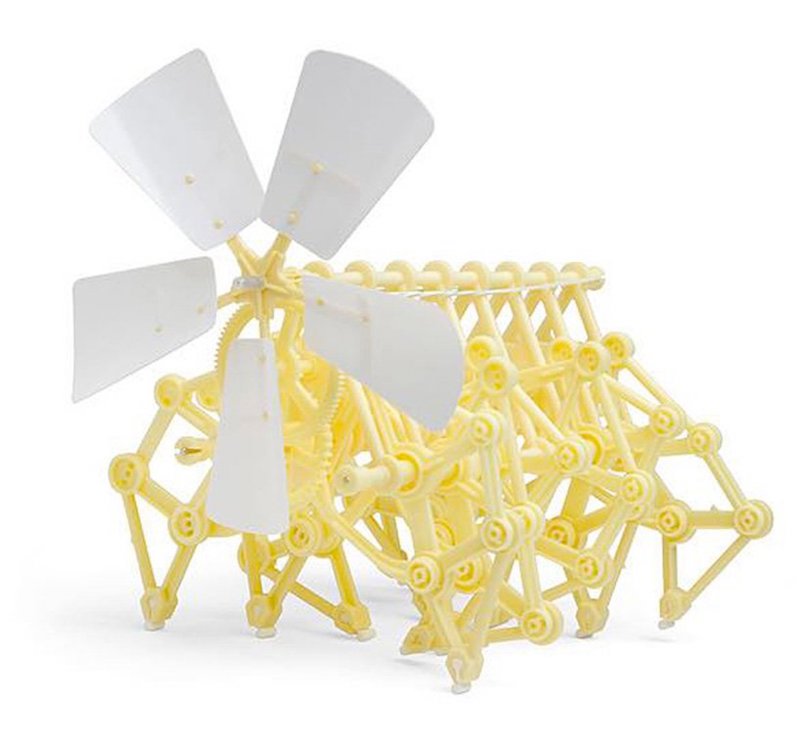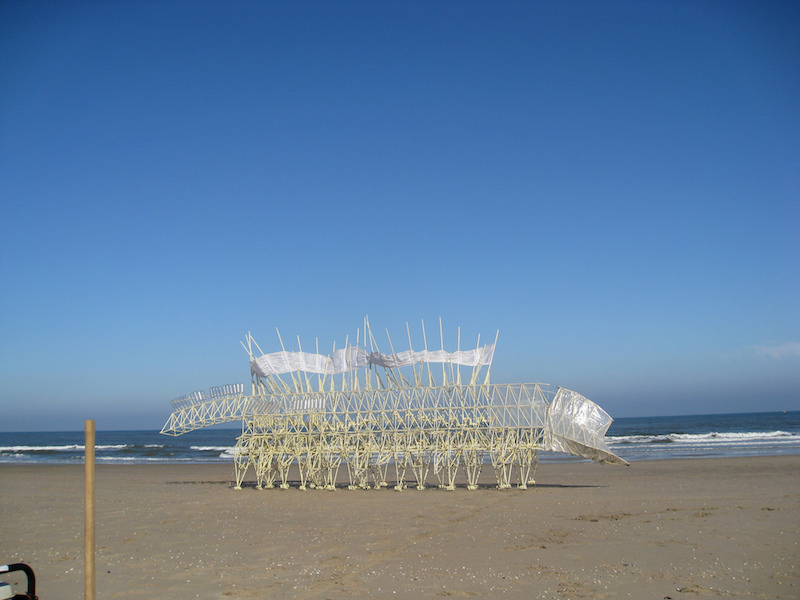Create a Mini Version of Theo Jansen’s Strandbeests with This DIY Kit
Massive mechanical creatures meander down sandy beaches seemingly of their own accord, their bodies made of nothing but complex arrangements of PVC pipes. These beasts don’t display any robotic parts, and no human pilot is sitting inside or standing nearby with a remote control in hand. That’s because these “Strandbeests,” as they’re named by their creator Theo Jansen, are actually powered by the wind.

First assembled in Holland in 1990, this project sees new iterations almost every year, with Jansen planning out new designs over the winter, building them in spring, and debuting them in summer. He’s even made the mechanisms for these kinetic sculptures open-source so designers all over the world can build their own versions. Now, a mini DIY kit is making it much easier to recreate them on a much smaller scale.
The Mini Strandbeest assembly kit comes with a postcard printed with both illustrated and written instructions, and it requires no tools to complete. The parts are mostly made of injection-molded plastic, and assembling them is kind of like putting together a puzzle. Once you figure out the pattern, the process is fairly intuitive. They snap together without any glue or screws, so if you get something wrong, it’s extremely easy to take it apart and try again.
The most important part of the Mini Strandbeest is its turbine, which comes in the form of five small curved blades. By the time you’re done attaching the assembled turbine to the gears and then to your tiny mechanical creature, all you need to do is put it out in the wind (or in front of a tabletop fan) to watch it move. The whole process takes about 60 minutes from start to finish.
The official kit is available on Theo Jansen’s website for €30, though knock-offs as cheap as $11.99 have been spotted on Amazon. It was also released through the Japanese publisher Gakken in a version that includes a book (in Japanese) full of color photos and several ideas for modifications, like the addition of a solar-powered DC motor.
Jansen, a Dutch physicist, sees his wind-powered machines as “a new species on Earth.” He notes that by putting the “DNA” of the Strandbeests on his website for public use, he has effectively helped them procreate.

“Since then, thousands of students around the world are building Strandbeests,” Jansen said in one 2014 interview. “And all these students, they think they’re having a good time. But in fact they’re being used for Strandbeest reproduction! And there’s a new kind of Strandbeest that doesn’t survive on beaches. They have found a protection against wind. They can survive in student rooms and bookshelves. This is in fact a better environment than on the beach.”
A few years ago, he notes, a few students came into his studio with a Strandbeest they made using a 3D printer, taking the project to a whole new level — something Jansen jovially deems “totally out of control.”

“So there’s a real evolution going on which you cannot stop anymore. And we all think that we are doing it but, in fact, the Strandbeests hypnotize people to do this.”




